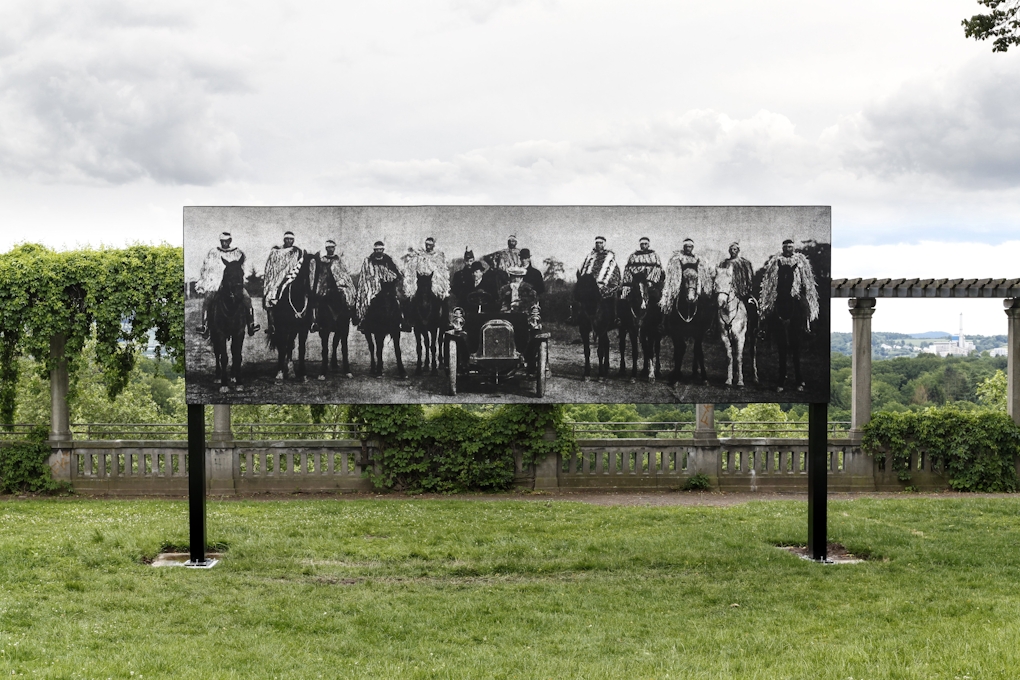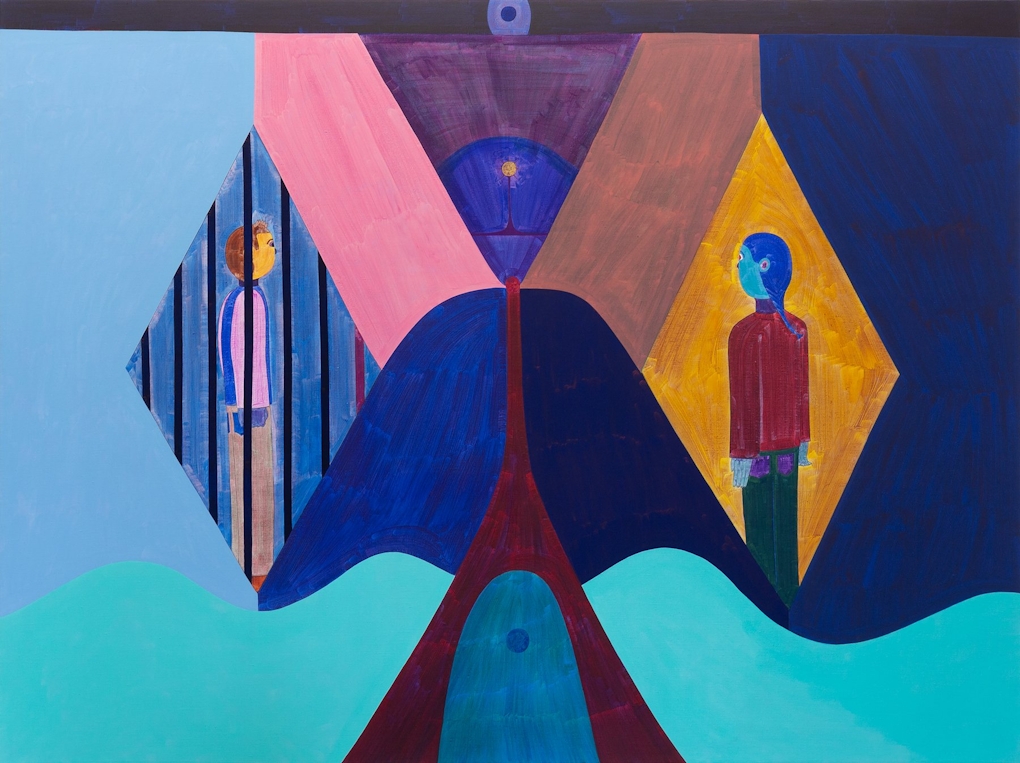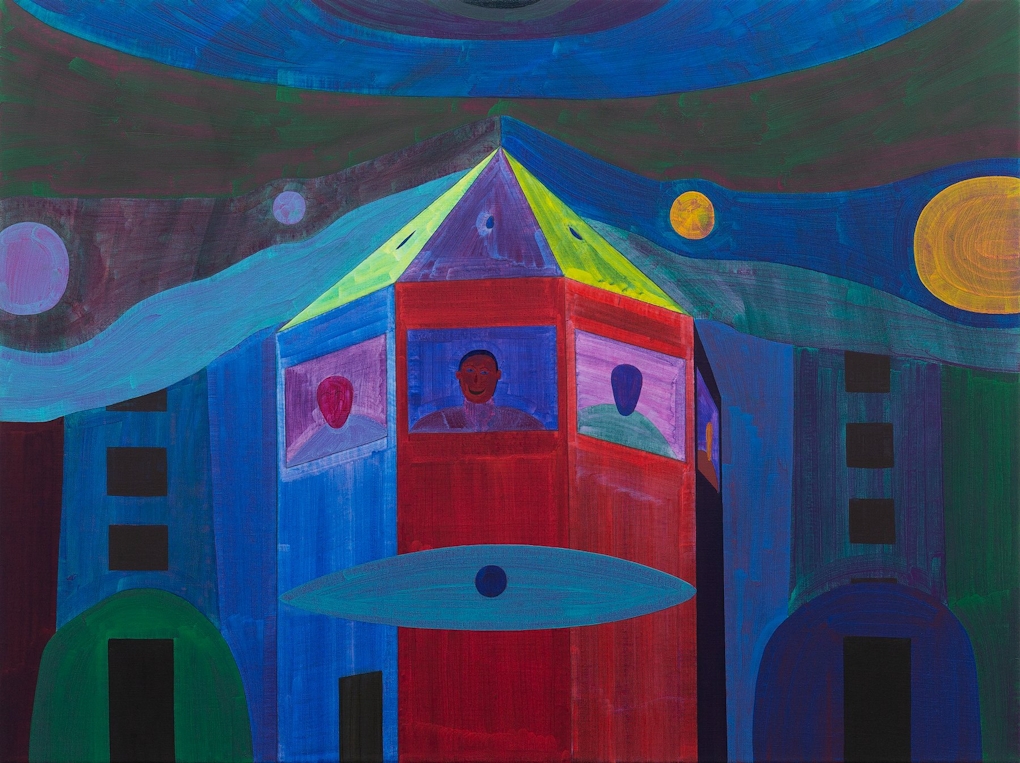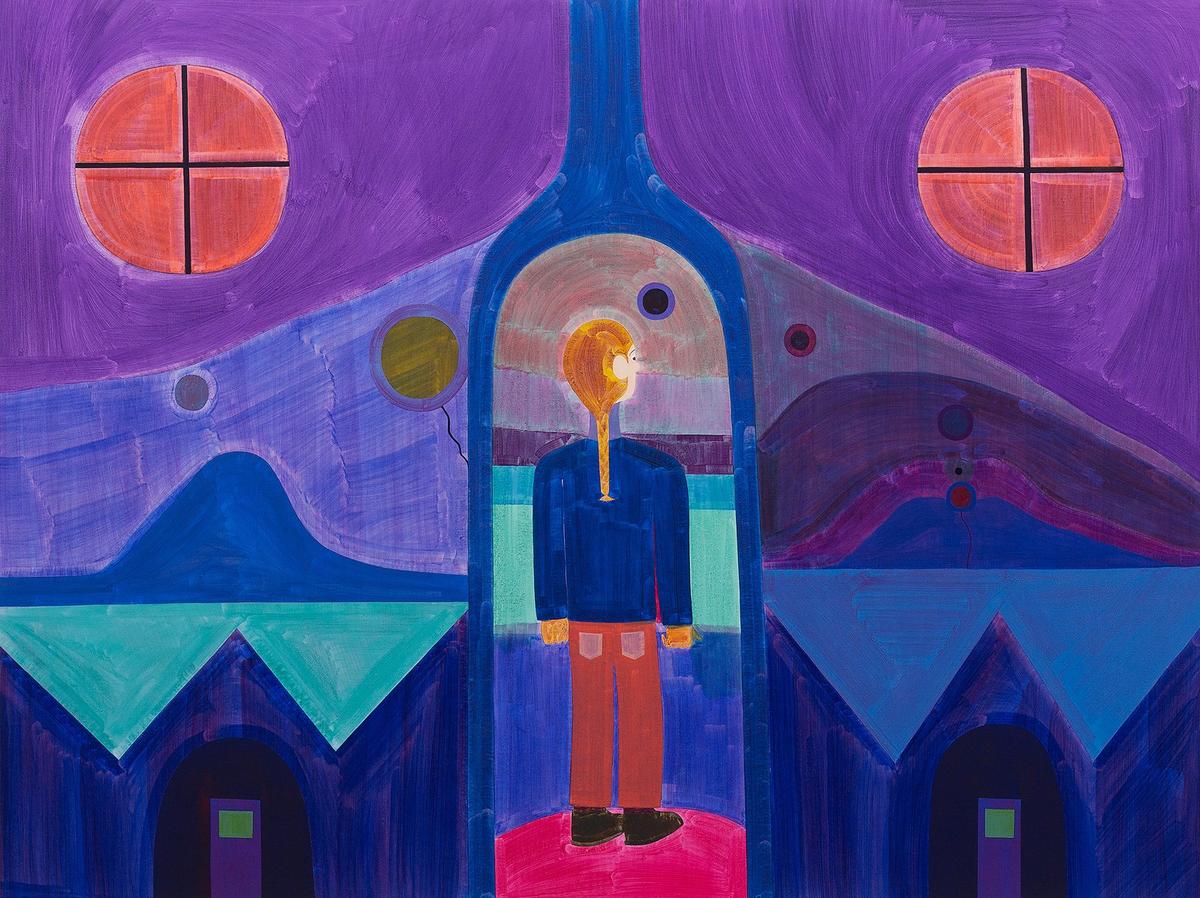We tend to think of moving image based work as privileging a time based materialism. That is, there is a constant precise metronome running through moving-image work, not only in how you experience it, but also what kind of registers or capacities the work might invoke or respond to. This makes it particularly apt to function as a kind of testimonial voice as it’s able to direct a kind of story telling in which multiple periods or viewpoints might be overlapped. For entirely similar reasons we might also say that this privilege invokes a lucid phenomenological reasoning. Think of Len Lye’s scratch films in which the fluid animation of a moving line takes on a kind of real time parameter that is as playful as it is volatile. Of course there is a much more obvious contemporary example in Sonya Lacey’s recent work at The Dowse (1), which doesn’t so much animate her newspaper clippings but overlays them, adding that temporal dimension so that the figurative device washes and bleeds over one another. And yet this isn’t just to describe Lacey’s work as moving Helen Frankenthalers, like those animations of Bauhaus works that so saturate today’s Instagram. That kind of pictorialism tends to miss the mark of moving image’s temporal frame. Indeed, to borrow that terminology we might make a distinction here between a kind of pictorial naiveity, say what you see in Dave Marshall’s paintings, also conveniently on show at The Dowse, and the temporal adjacencies that are invoked by the overlapping techniques of Lacey’s work as well as our own phenomenological response to the work. Indeed what we might say of Lacey’s work is that we witness something that is no longer purely pictorial, but haptic, experiential even, more so because it is so entwined with the works’ subject. More on this shortly.
I sketch this loose framework because I want to write about Sam Rountree Williams' recent suite of paintings at Robert Heald’s. It strikes me that we might write about these being similarly experiential in the way good moving image work tends to be. Here I think is also an opportunity to talk about a kind of painting that is cinematic in a way that previously we have only ever spoken of in relation to more abstract work. Indeed we need only think back to The Adam Art Gallery’s Cinema and Painting exhibition in 2014, especially given the prominence of Judy Millar’s scroll work in that show, to see the way tend to think of the cursive qualities of abstraction as being paintings recourse to the cinematic. Of course that’s not to say that the volatile and conditional qualities, particularly the energetic fluidity in Millar’s work doesn’t invoke the kinds of restive temporality that we so often get with moving image based work. Nor does it surprise me that my first example was Lye’s scratch films, largely because they are such an accessible case study of this overlap. And yet this very undercurrent is also functioning in Lacey’s work at The Dowse, where even if it is far less pictorial, it is still entirely cursive, especially given Lacey’s use of the wipe technique, that enjambing of the image so that it slowly overlaps another, so that what we witness is a kind of punctum, a piercing of the artifice that alerts us to the very subject we have been avoiding all along, which is, at is so often in Lacey’s practice, a reflexive awareness of the very conditions of knowledge production. In this instance the very architecture of printing’s cymk technologies, and yet also the primal registers through which haptic knowledge itself is so reliant. Of course I stray here, but this technique is not entirely dissimilar to what’s going on in Rountree-Williams paintings as well.
Weekend (Installation Documentation 1 of 2) (2018) Sonya Lacey
I’ve said elsewhere, that there is a cinematic quality to the directives of other artists’ works. Notably, in Nathan Pohio’s photograph Raise the anchor, unfurl the sails, set course to the centre of an ever setting sun! (2017), whose very title has been said to turn the work into an incredibly short film, all of one still. Which of course, it very well might be. We can, after all, have competitions for the shortest story. Hemingway’s, “baby shoes for sale” being the most oft quoted starting point. But that kind of condensation isn’t what is at work in Pohio’s work either. To return to my earlier theme, Hemingway invokes a kind of pictorialism in which we picture the elements combining into a scene, whereas in Pohio we have a much more speculative title, one that takes on another kind of historiography and borrowing from his title rides off into that cursive space I just suggested that painting shares with the temporal medium of moving image work. Which it does too in Paul John’s recent text based work which directed us unapologetically to "look at the crowd in swimming”. There of course the speculative off-screen imagery was certainly reinforced by Johns’ addition of the small stool, but it’s also reinforced by the general meditative mood of Johns’ practice, not to mention the disjointed syntax which instantly triggers that something else is going on. That is to say it is cursive in a way that is no longer purely pictorial.

Raise the anchor, unfurl the sails, set course to the centre of an ever setting sun! (2015) Nathan Pohio. Commissioned by SCAPE Public Art. Image courtesy of the artist.
Just to be clear, I’m not advocating here that pictorial work is bad. Indeed it strikes me that you might think of Dave Marshall’s paintings as Giotto-esque in that they so clearly piece together a story in such soft muted tones that is obviously teleological in one sense or another. But what I’m thinking of here is the way we read paintings, and how if we start to follow the more translucent style of painting that Rountree-Williams so specialises in, what we start to see is something that is not just much more speculative, but entirely temporal and haptic just like good moving image work ought to be. Again, just to be plain, this is where I think Rountree-Williams’ paintings find their resonance, especially given their pictorial nihilism, which evinces a self-effacing naivety whose cartoonish characters and figurative elements makes its more abstract qualities entirely ambiguous. Indeed, it is precisely this kind of camouflage that opens the paintings up to a qualitative experience, one that is much more amorphous than its pictorial quotient might suppose. By this I mean the enframing techniques, those huge swathes of colour blocks that envelop and cocoon the figurative plots.

Out There on the Slippery Seas (2018) Sam Rountree Williams, oil on linen, 210 x 280cm. Courtesy the artist and Robert Heald Gallery, Wellington
Take for instance, Out There on the Slippery Seas (2018), don’t we only see its figurative devices, its lone humanoids, precisely because of this specific kind of aperture, a liminal parting of the abstraction’s folds. Indeed it’s worth asking why we focus so keenly on the human figures at all and not this mechanism of revelation. Does it not present itself as two kind of eyes? As if the painting is surveying you? Does not the whole canvas heave with a turbulence that threatens to draw you into the folds, to stand in the tentative uncertain ground those two figures occupy? Doesn’t this enframing sign something alchemical, or at least a certain temporal mechanism geared at inducting the viewer like any film work might? Such invocations are less obvious in Islands (2018) but it is nonetheless a panoramic work that inducts us to take up the pace of the isolated human, standing in what is so obviously a bottle. Of course we could read that device as the trapped alcoholic or the envoy, the messenger in the bottle traversing the landscape, and yet both readings still rely on how well this device blurs into the scenery, is swallowed whole by the very mechanism of their painterly technique. Could we not say then that these paintings are alert with a motility that eclipses its figurative pictorialism? This swallowing of the subject is marked everywhere in Rountree-Williams' paintings. There is the buried figure below the bungalow in Villa (2018), the women trapped in her bottle in Islands, or the partitioned figures of Slippery Seas. These subjects aren’t just passive stand-ins for our delectation of the scenery, they are figures trapped in apertures, caught up in the folds of the paintings. In short, the figures are a kind of decoy, or better yet a sort of buoy or marking post, even a lumpen protest against a much more omnivorous force. This is of course most clearly evident in Lonely Tower (2018) a painting that so obviously echoes Jeremy Bentham’s panoptican, that disciplinary observation technique Michel Foucault popularised. Indeed, given that Foucault’s tower signed a new regime of visibility and surveillance, a profanation before observation, something later updated by Giles Deleuze in his short essay Postscript on the Societies of Control (1990) as a more diffuse but no less rigorous regime that many see in the participatory rites of social media, it’s no surprise to recognise this device amidst Rountree-Williams’ swallowed subjects. After all, given the voluptuous enfolding of the subject in the previous paintings, isn’t there an implicit context at work, as I mentioned before of a motility or force directing these paintings that goes beyond the mere decoy of the figurative ploys. Isn’t there a sort of camouflage in which we too are isolated, entrapped in these panoramas not as speculative subjects but rather more simply as bait or the meal itself? Surely that is why Rountree-Williams inverts Bentham’s tower guard, not as the omnipresent observer but as the isolated, anomic subject of modernity. Is that the echo we hear throughout Rountree-Williams’ humanoids, trapped in varying levels of crisis. Surely there is a passivity to these figures that is undeniable, something reinforced by the very crude way in which the figures are rendered. Are they not cartoons designed to be interchangeable rather than definitive. Here then is the perfect refrain on which to pitch these paintings as kind of tableaux with no end, a horizontal surface that absorbs. Here then we met a kind of temporality that I’ve been saying we see so often in film, only in these paintings there is no ending, no finality of a linear plot, just an upended enfolding of the subject, which the more you probe, ensnares you, the spectator. Why else are the paintings so voluminous, so absorbent. Those fissures that ensnare the figurative devices aren’t just there as plot devices.

Lonely Tower (2018) Sam Rountree Williams, oil on linen, 93 x 124cm. Courtesy the artist and Robert Heald Gallery, Wellington
In these paintings there is no ending, no finality of a linear plot, just an upended enfolding of the subject, which the more you probe, ensnares you, the spectator.
Such sentiment is of course a long way from saying these paintings are filmic. But how else though might we explain the way they are painted. Aren’t the brush strokes incomplete, not in the sense of being provisional but as simply being sparingly deployed? Do they not proffer a kind of temporal washing of the brush, so that what we get isn’t a passing image but a developing story? There is much in Rountree-Williams’ routines that would support this, but I want to finish here by suggesting that what we see in these paintings is a kind of language that escapes its obvious pictoralism, but only if we can recognise that greater enveloping framework through which they are painted. Namely that resonant alter image that encodes the subjects. Does this not camouflage its very intent by presupposing a sort of aperture through which it’s entrapped subjects aren’t just made observable, but turned into bait, so that we too, us viewers, might be similarly swallowed whole. If such enframing turns a cinematic lens onto Rountree-Williams’ paintings perhaps we ought to heed its significant departure from that linear format, and recognise just how cannily they similarly echo our own residual trapping in a temporality without end. Surely that’s the reason the show’s called Cell.
